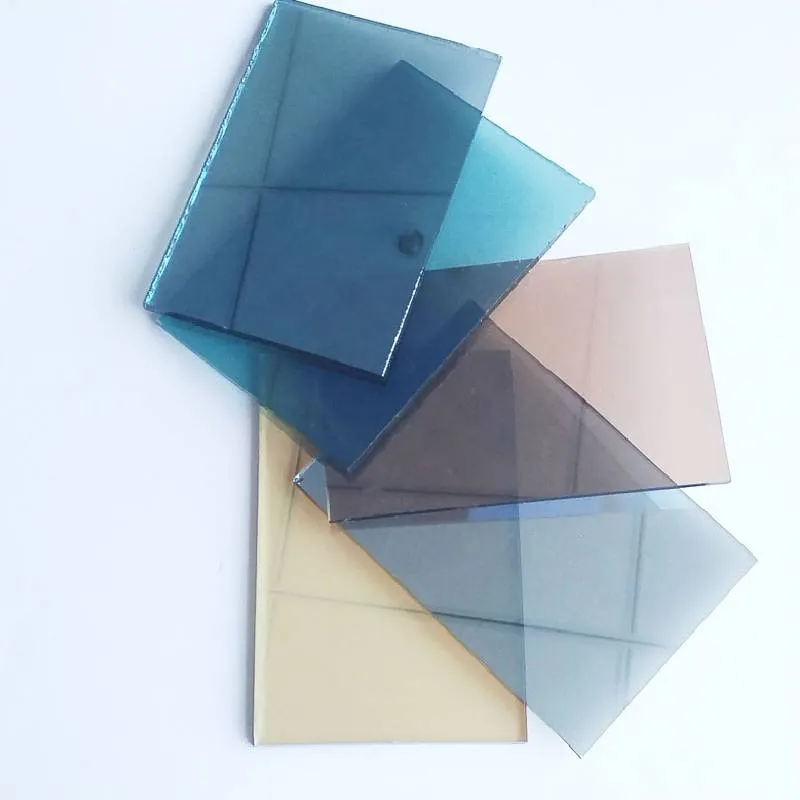Is Rain Glass More Expensive Than Clear Glass?
When it comes to selecting the right type of glass for construction or decorative purposes, consumers are often faced with a plethora of options, each with its own unique characteristics and price points. Among these choices, rain glass and clear glass are two popular types that serve different aesthetic and functional purposes. However, one common question that arises is whether rain glass is more expensive than clear glass.
To begin with, it's essential to understand what rain glass is. Rain glass, often referred to as water glass or obscured glass, is a type of glass that has been treated to create a textured surface. This texture resembles the effect of raindrops, providing visual distortion that enables privacy without sacrificing natural light. This makes it an ideal choice for bathrooms, offices, or any space where privacy is a concern. In contrast, clear glass is smooth, offers full transparency, and is used in a variety of applications from windows to glass doors and table tops.
The pricing of these two types of glass can vary significantly based on several factors. For starters, the manufacturing process plays a crucial role in determining the cost. Clear glass is relatively simple to produce and requires fewer materials, whereas rain glass involves additional processing to create its distinctive texture. This added complexity can result in higher production costs, which may translate to higher prices in the market.
Another factor influencing the price difference is the demand and availability of each type of glass. Clear glass is ubiquitous and widely used, thus leading to economies of scale that keep its price relatively low. On the other hand, rain glass is less common and may be produced in smaller quantities, causing the price to rise due to limited supply. The disparity in demand can also impact the resale value of these products, with rain glass often commanding a premium.
is rain glass more expensive than clear glass
Additionally, the thickness and quality of the glass can introduce variations in price. Higher quality rain glass with superior texture and durability may be priced significantly higher than standard clear glass. Specialty rain glass options with unique designs or gradients can also come with a hefty price tag, further widening the gap between it and standard clear glass.
Installation costs can also influence overall expenditure. While the frame and structure of a window may remain the same, certain types of glass, including rain glass, may require specific sealing methods or installation approaches, which can increase labor costs. Clear glass, being more straightforward to work with, typically incurs lower installation fees.
Ultimately, while rain glass tends to be more expensive than clear glass due to its manufacturing process, demand, and specialty qualities, the choice between the two depends on individual needs and aesthetic preferences. If privacy and visual appeal are primary concerns, investing in rain glass may be worthwhile despite the higher cost. On the other hand, if budget constraints are a priority, clear glass can serve its purpose effectively without breaking the bank.
In conclusion, while rain glass generally carries a higher price tag than clear glass, the decision between the two should take into account not just the cost but also the intended use, aesthetic goals, and personal preferences. In the world of glass selection, understanding what you are paying for can lead to a more satisfying choice that fulfills both functional and artistic demands.
 Afrikaans
Afrikaans  Albanian
Albanian  Amharic
Amharic  Arabic
Arabic  Armenian
Armenian  Azerbaijani
Azerbaijani  Basque
Basque  Belarusian
Belarusian  Bengali
Bengali  Bosnian
Bosnian  Bulgarian
Bulgarian  Catalan
Catalan  Cebuano
Cebuano  Corsican
Corsican  Croatian
Croatian  Czech
Czech  Danish
Danish  Dutch
Dutch  English
English  Esperanto
Esperanto  Estonian
Estonian  Finnish
Finnish  French
French  Frisian
Frisian  Galician
Galician  Georgian
Georgian  German
German  Greek
Greek  Gujarati
Gujarati  Haitian Creole
Haitian Creole  hausa
hausa  hawaiian
hawaiian  Hebrew
Hebrew  Hindi
Hindi  Miao
Miao  Hungarian
Hungarian  Icelandic
Icelandic  igbo
igbo  Indonesian
Indonesian  irish
irish  Italian
Italian  Japanese
Japanese  Javanese
Javanese  Kannada
Kannada  kazakh
kazakh  Khmer
Khmer  Rwandese
Rwandese  Korean
Korean  Kurdish
Kurdish  Kyrgyz
Kyrgyz  Lao
Lao  Latin
Latin  Latvian
Latvian  Lithuanian
Lithuanian  Luxembourgish
Luxembourgish  Macedonian
Macedonian  Malgashi
Malgashi  Malay
Malay  Malayalam
Malayalam  Maltese
Maltese  Maori
Maori  Marathi
Marathi  Mongolian
Mongolian  Myanmar
Myanmar  Nepali
Nepali  Norwegian
Norwegian  Norwegian
Norwegian  Occitan
Occitan  Pashto
Pashto  Persian
Persian  Polish
Polish  Portuguese
Portuguese  Punjabi
Punjabi  Romanian
Romanian  Russian
Russian  Samoan
Samoan  Scottish Gaelic
Scottish Gaelic  Serbian
Serbian  Sesotho
Sesotho  Shona
Shona  Sindhi
Sindhi  Sinhala
Sinhala  Slovak
Slovak  Slovenian
Slovenian  Somali
Somali  Spanish
Spanish  Sundanese
Sundanese  Swahili
Swahili  Swedish
Swedish  Tagalog
Tagalog  Tajik
Tajik  Tamil
Tamil  Tatar
Tatar  Telugu
Telugu  Thai
Thai  Turkish
Turkish  Turkmen
Turkmen  Ukrainian
Ukrainian  Urdu
Urdu  Uighur
Uighur  Uzbek
Uzbek  Vietnamese
Vietnamese  Welsh
Welsh  Bantu
Bantu  Yiddish
Yiddish  Yoruba
Yoruba  Zulu
Zulu 

